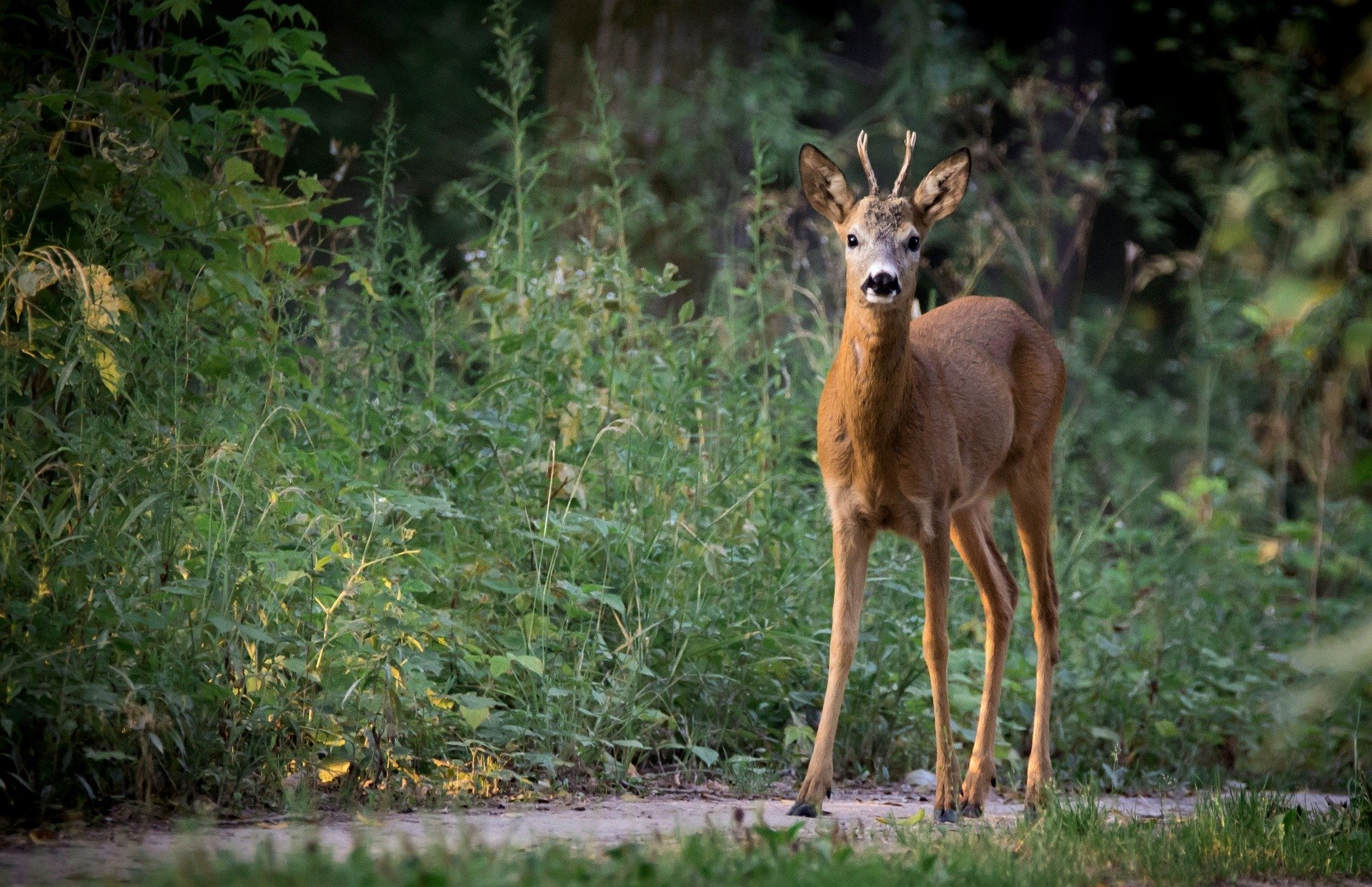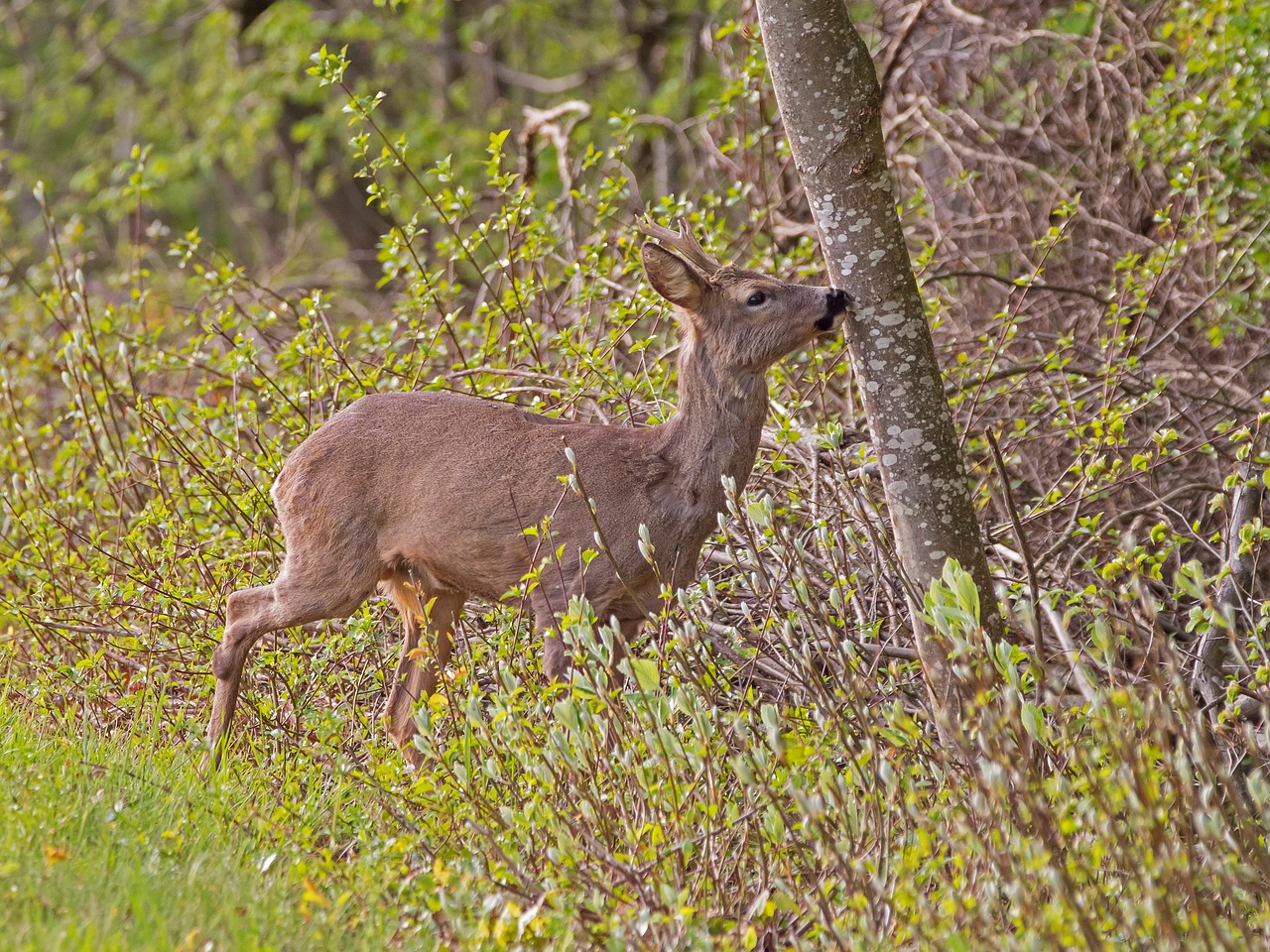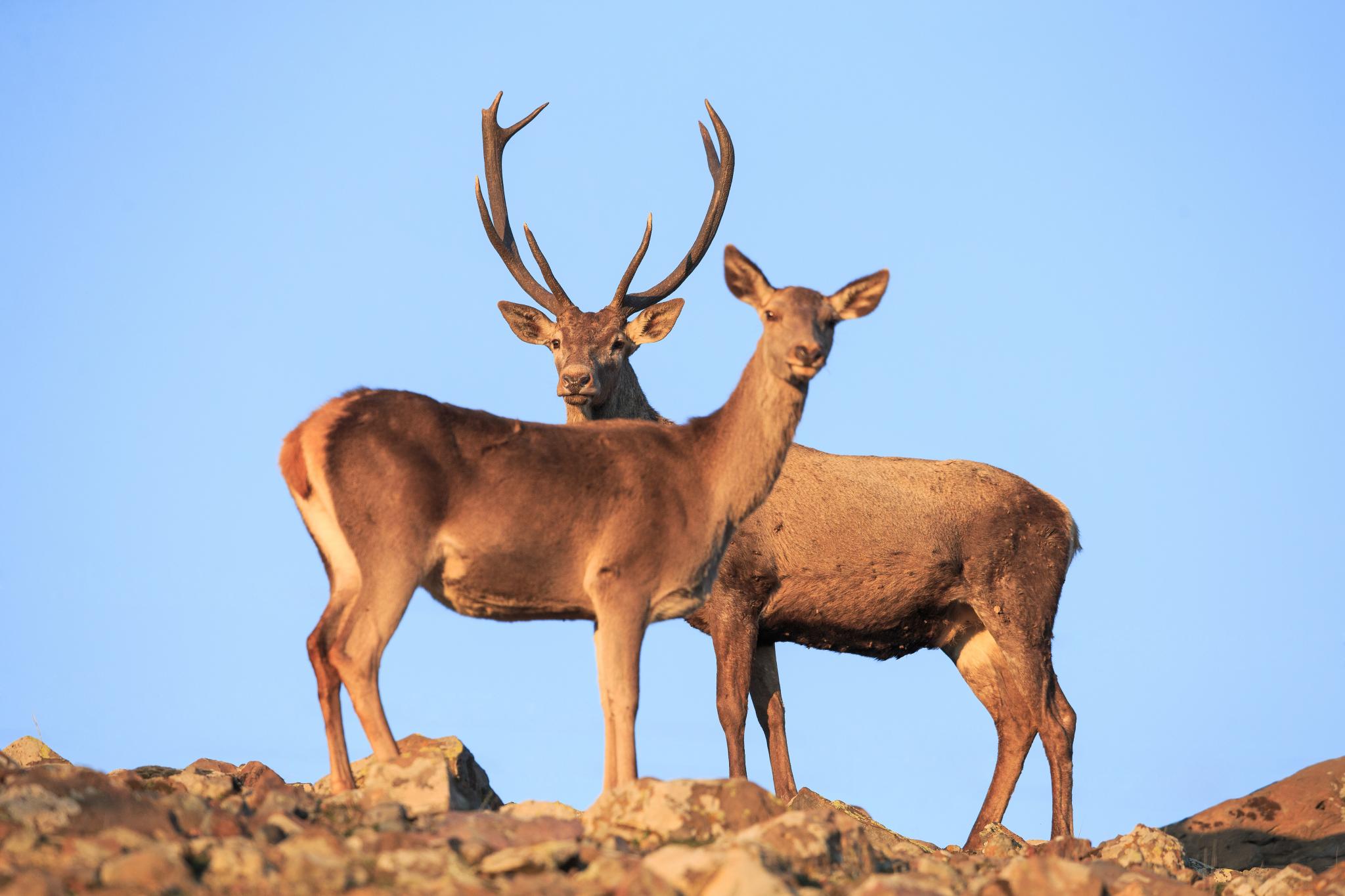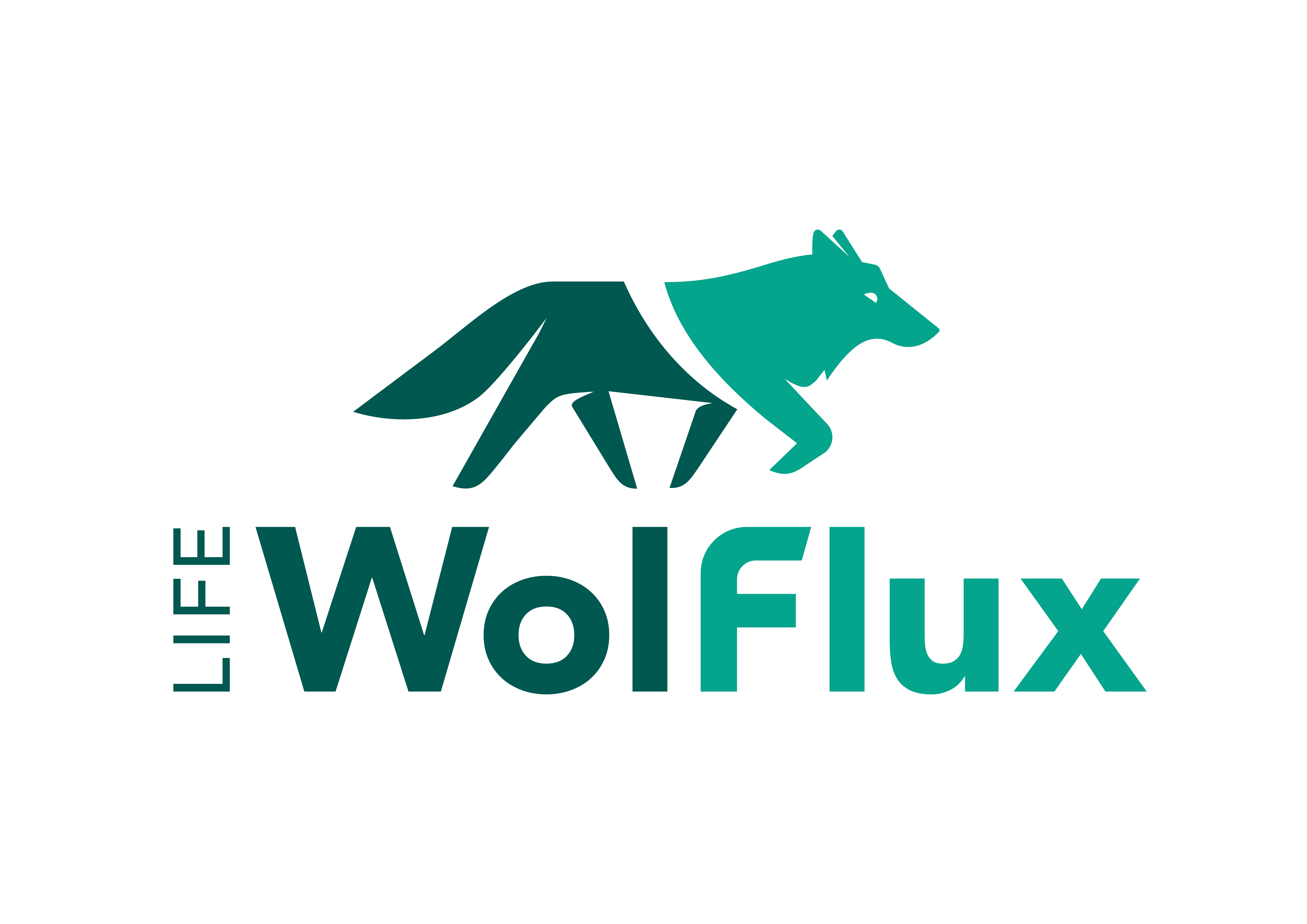The roe deer is a small deer native to Portugal and one of the main preys of the Iberian wolf. Although the species is recovering, it is necessary to strengthen the viability of its populations and allow the roe deer to play its role in ecosystems.

Roe deer’s role
The roe deer is a small deer, more discreet than the deer, but known to adapt to a wide variety of habitats. Although it prefers landscapes with mosaics of forest and open areas, it can also occur and even establish itself in less wooded places, as long as there are areas of high and dense scrub that provide refuge and food.
Like other wild herbivores, the roe deer can play an important role in the dynamics of the landscape. Feeding on vegetation, the roe deer plays its role in creating discontinuities in the landscape and reduces the risk of fire spread, also contributing to the creation of ecological niches for other species.
Its role as prey is extremely important in ecosystems, since it is one of the main prey of the Iberian wolf, and can make up a large part of the diet of this carnivore. Due to their great adaptability, both species occupied, in their original distribution, practically the entire national territory. Several studies in Mediterranean countries suggest that the wolf feeds preferentially on wild ungulates, whenever the community of ungulates is diverse and the populations are abundant. In areas where cattle exist, a fundamental factor is also the type of management, as it can increase or reduce the risk of predation in livestock.
From near disappearance to recovery
At the beginning of the century XX, the roe deer had disappeared from almost all of the Portuguese territory, largely due to excessive hunting and a large regression of forests (due to agricultural and also pastoral activity). The last populations of roe deer were restricted to some mountain ranges in the north of the country, namely the regions of the mountains of Peneda and Gerês, Alvão and Marão, Montesinho and Nogueira.
However, its adaptability and resilience, combined with the natural expansion of the species and several reintroduction projects in the following decades, both in Portugal and in Spain, the roe deer managed to recolonize a good part of the original territory, being present today throughout the north of the country and in the center-interior more or less continuously, and with some nuclei dispersed in the rest of the country. There are, however, many areas of its original distribution where the roe deer is absent or in extremely low numbers, making the species’ functions in the ecosystem unfeasible, such as creating discontinuity and reducing plant biomass or being frequent food for the Iberian wolf.

The LIFE WolFlux project
The monitoring of wild prey of the Iberian wolf carried out within the scope of the LIFE Wolflux project, by the University of Aveiro (entity coordinating this action) with the support of Rewilding Portugal, revealed that, despite the roe deer having a wider distribution and being more abundant in the East region of the project area (eg, Malcata mountains and Côa Valley), its abundance is very low in the mountains to the north of the district of Viseu and in Serra da Estrela.
One of the objectives of the LIFE WolFlux project is to increase the abundance and distribution of roe deer in strategic areas through population reinforcements, habitat restoration actions, and global management plans. It is expected that the combination of these actions with the increase of damage prevention measures – such as livestock guarding dogs and fences – which are also being supported by the LIFE WolFlux project – will contribute to a reduction in losses in livestock caused by the wolf.
“The knowledge of the wild ungulates population situation, accompanied by their management and social involvement, are important components in the conservation of the Iberian wolf.”, says João Carvalho, a biologist of the University of Aveiro, about the importance of this work in the field.
The LIFE WolFlux project team is now carrying out the preparation and planning work which, if successfully completed, will help the roe deer to thrive in key areas where the habitat is suitable for it, but where the species is currently absent or present in very small numbers.
Sucess cases
The planning of these population strengthening actions follows the example of the success of other actions for reintroducing roe deer, such as those carried out since 2013 in the mountains of Freita, Arada and Montemuro by the ACHLI and the University of Aveiro. The animals reintroduced in these mountains gave rise to a breeding population that continues to expand and that serves as prey for the Iberian wolf.
The reintroduction or reinforcement of deer populations has also been successful in other rewilding initiatives across Europe, such as in the Rhodopes Mountains, where the initial populations of deer and fallow deer are currently expanding. Since the beginning of Rewilding Rhodopes’ work, in the last five years, more than 400 fallow deer and 50 red deer have been introduced. These species, which need to have at least populations of 50 adult animals to be viable, have been hunted to extinction, notably in Bulgaria, and are now finally regaining the role they once played in the landscape.
The population reinforcements have been made at different points and without direct contact with each other, so that with the natural growth of these new populations, they can come to connect in a natural way in the future, recovering the species and allowing them to cover the East side of the Rhodopes mountains.
In addition, this population reinforcement measure in the region also aims, in the long term, to increase the availability of natural food (corpses in this case) for the growing population of griffins present in Bulgaria, which at the moment is still too dependent on artificial feeding stations. . The Rewilding Rhodopes team also guarantees that the presence of these wild herbivorous species and the natural grazing that they practice “helps to maintain and increase biodiversity, maintaining open landscapes”.

IMAGE: (C) BOGDAN BOEV
About our project
The LIFE WolFlux project is financed by the European Commission’s LIFE program and co-financed by the Endangered Landscapes Programme, and aims to improve the subsistenceconditions of the Iberian wolf south of the Douro River, as well as the objective of improving the coexistence between the species and local communities.
Rewilding Portugal has its partners in this project: Rewilding Europe, ATNatureza, University of Aveiro and Zoo Logical.

